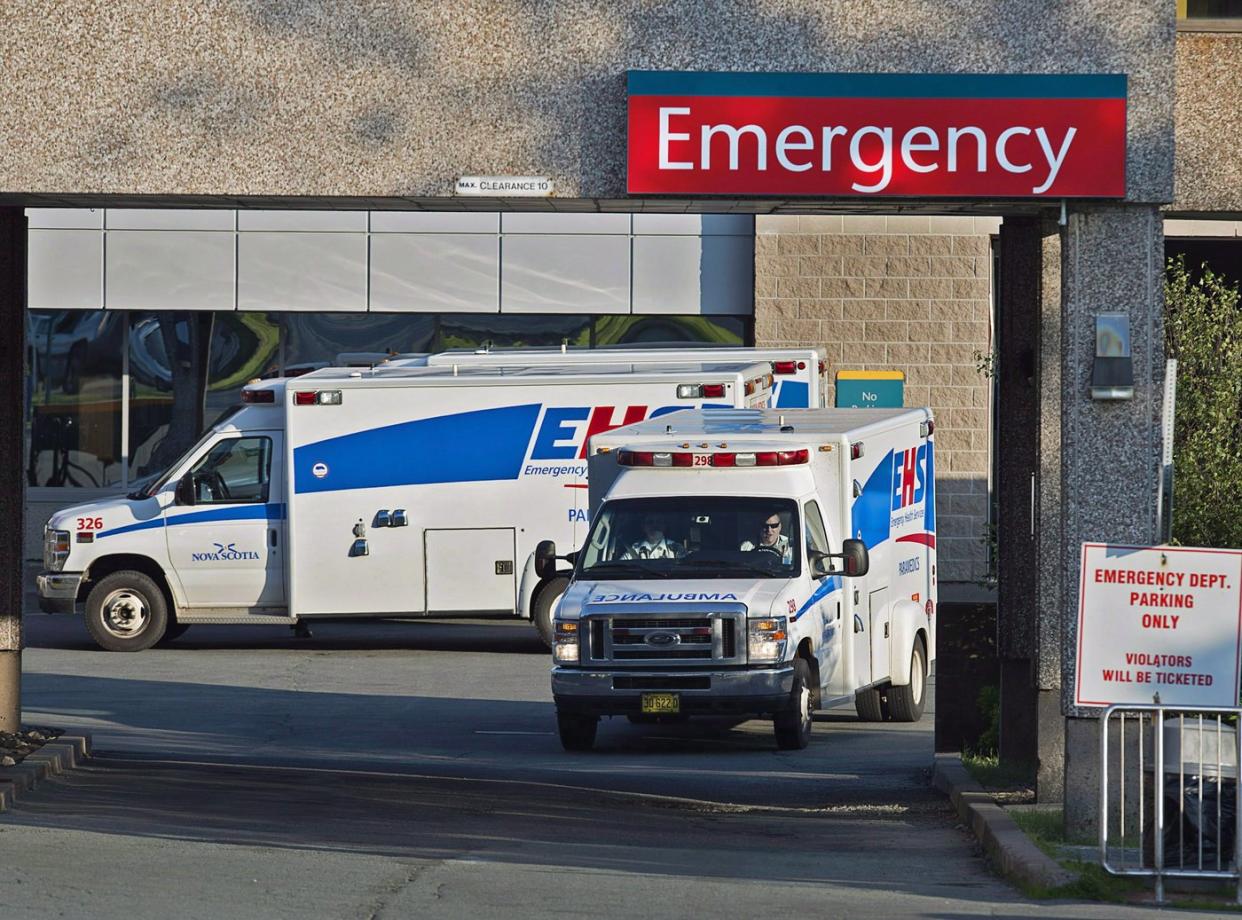N.S. emergency department deaths hit six-year high, doctors point to 'bed-blocking'

ST. JOHN'S, N.L. — Doctors in Atlantic Canada say too many beds in emergency departments are taken up by people who need non-emergency care, and the "bed-blocking" is driving high numbers of emergency department deaths.
Dr. Mike Howlett, president of the Canadian Association of Emergency Physicians, says ideally patients would be treated in the emergency department, and then moved out — perhaps to a spot in long-term care or back to their residence with home care lined up. But these community supports are increasingly scarce, leaving patients languishing in the emergency department, where research shows they're more likely to grow sicker, or even die.
"What we really need is a decision by governments to make it a priority that these patients won't stay in the (emergency) department as long as they are because we know that it kills people," said Howlett, who is also an associate professor at Dalhousie University, in a recent interview.
"By not addressing it, governments and planners are systematically aiding and abetting a service level that virtually guarantees people will do worse."
Figures from Nova Scotia's health authority show emergency department deaths hit a six-year high in 2023, with 666 deaths compared with 558 the year before. That's an increase of more than 19 per cent.
New Brunswick's francophone Vitalité Health Network saw a slight increase, with 216 deaths last year compared with 208 the year before. The province's Horizon Health Network did not provide complete figures for last year.
Prince Edward Island's emergency department deaths dropped, from 48 in 2022 to 35 in 2023.
Newfoundland and Labrador saw a slight decrease, from a five-year high of 326 in 2022 to 297 in 2023. Last year's figure is still higher than the years before and during the height of the COVID-19 pandemic.
"The numbers are too high," said Dr. Stephen Major, president of the Newfoundland and Labrador Medical Association.
Like Howlett and the other doctors who spoke with The Canadian Press, Major said the figures require more analysis and detail to yield a nuanced picture of what is happening in emergency rooms. But he agreed that they indicate there are problems, particularly with bed-blocking.
Major is a family physician in St. John's, and he worked in the province's emergency rooms for more than 20 years before taking a break last year.
"There were times where there were 30 admitted patients, and you might have three to five beds that are free to try to cycle people through," he said. "We're seeing patients in a chair, in a corner, you're putting patients wherever you can see them, because they need care."
Major said patients are also arriving at emergency departments much sicker than they should be. They don't have family doctors, and as a result their illnesses have gone undiscovered and untreated, he said. He suspects some people wait as long as they can before dialing 911 or going to the emergency room, because they know they'll wait a long time, and maybe not in a bed.
He said doctors are feeling a sense of moral injury and believe they're working in an unsafe environment for their patients. "When I go in, I should be able to do my job and provide for patients what they need. But if I'm trying to see people in a corridor, in a chair or in a closet — you're just trying to provide any care possible, but it's not sensible that we're forced to operate in this manner."
Dr. Robert Martel, who worked in Nova Scotia emergency rooms for decades and now sees occasional patients, said treating people in hallways or closets is emotionally exhausting for emergency physicians.
"I think physicians are now kind of numb to this, because they just don't see anything changing," he said in an interview. "I was talking to a colleague the other day and she was saying, 'It's anxiety-provoking to walk into the department because I know what I'm going to be facing, and it's just gut wrenching to walk out with what I've left behind.'"
Matthew Murphy, Nova Scotia Health's chief data officer, said the health authority is working hard to improve the flow of patients through the province's emergency departments.
He said his data agrees with the doctors' hypothesis that the higher number of deaths are partially attributable to patients who are showing up to the emergency room much sicker than before. This stems from a family physician shortage, and to the general health of the population across Atlantic Canada, which is older and sicker than the rest of Canada, he said.
Murphy disagrees, however, with the idea that emergency rooms are becoming less safe. He said the authority has worked hard to create more space in emergency departments to reduce the number of patients who wind up being treated in hallways.
"We want patients to be cared for in the most appropriate care setting. Clearly, that's not a hallway and it's not a closet," he said. "At the same time, being treated in a hallway is better than not being treated at all."
Howlett said health officials in all provinces need to start long-term strategic planning to ease the pressure on emergency departments. That planning must include doctors, long-term care operators and others offering community care, such as home supports.
"Routine care has become not routine anymore. It's become risky," he said, adding: "We need to start planning how we should be mapping out our services, and what it's going to take to deliver them."
This report by The Canadian Press was first published July 10, 2024.
Sarah Smellie, The Canadian Press


